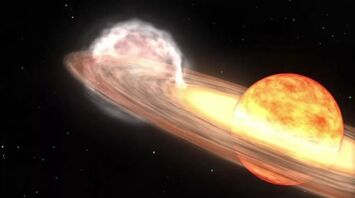Astronomers prepare for once-in-a-lifetime event: A 'new star' in the night sky

A once-in-a-lifetime cosmic spectacle is on the horizon as astronomers anticipate the explosive rebirth of T Coronae Borealis, a celestial event expected to create a "new star" in the night sky. This rare nova, located 3,000 light-years from Earth in the constellation Corona Borealis, involves a white dwarf, T Coronae Borealis, which will soon reignite by feasting on the material from a neighboring red giant star. This process is expected to result in a powerful explosion, which occurs about once every 80 years, temporarily matching the brightness of the North Star, Polaris.
Dubbed the Blaze Star, T Coronae Borealis is a two-star system that generates significant excitement among astronomers who are closely monitoring its activity. This process is detailed by scientists who note that the white dwarf siphons energy from its red giant companion, triggering a thermonuclear explosion that doesn't destroy the star but rather resets the cycle. The rebirth of this "nova" could blaze visibly to the naked eye for up to two weeks.
With the aid of advanced telescopes, including NASA's Fermi Gamma-ray Space Telescope and the European Space Agency’s INTEGRAL, astronomers have earmarked valuable observation time to analyze this rare phenomenon, hoping to glean deeper insights into the underlying mechanics of nova events. Edward Sion from Villanova University notes this occurrence could vastly enhance the models of stellar activity, given the complexity and rarity of such events.
Echoing the excitement, Dr. Rebekah Hounsell of NASA believes this spectacle will not only offer valuable data but will also inspire future generations of scientists. Elizabeth Hays, from the Fermi team, emphasizes the importance of a coordinated observation approach to fully understand the processes involved, noting the challenges posed by such distant phenomena. Despite the immense energy released, scientists reassure the public that this event poses no threat to Earth; rather, it offers a rare opportunity to grasp the majestic dynamics of the cosmos. As astronomers await its impending brilliance, this nova may soon captivate eyes worldwide.
Earlier, SSP wrote that a comet to make the closest approach to Earth since the Stone Age.



















